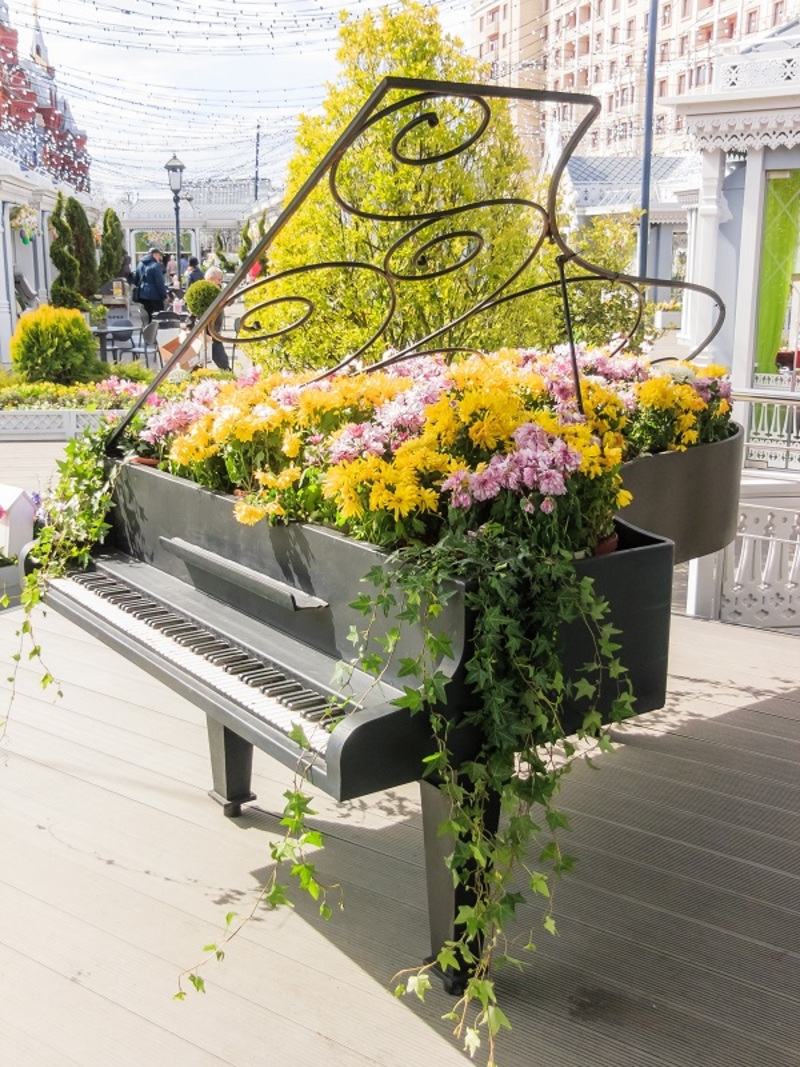Effective Techniques for Poinsettia Preservation
Posted on 26/06/2025
The poinsettia (Euphorbia pulcherrima), with its vibrant red, pink, white, or variegated bracts and dark green foliage, stands as a symbol of holiday cheer and warmth. Sadly, many see their poinsettias wither away shortly after the festive season ends. However, poinsettia preservation is not only possible but also rewarding for those interested in enjoying these beautiful plants all year round. In this comprehensive guide, we'll explore effective techniques for poinsettia preservation, ensuring your plant thrives well past the winter holidays.
Understanding the Poinsettia: Origins, Growth, and Seasonal Cycle
Before diving into preservation techniques, it's essential to understand the poinsettia's natural cycle and requirements. Native to southern Mexico, poinsettias flourish in a warm, humid climate with distinct wet and dry seasons. Unlike annuals, poinsettias are perennial shrubs that, with proper care, can flower reliably year after year.
Life Cycle of the Poinsettia
- Winter: Most commonly sold as a holiday plant, blooming with bright bracts.
- Spring: After flowering, growth slows and the plant enters a resting phase.
- Summer: Vigorous stem and leaf growth resumes.
- Autumn: Flower initiation begins with decreasing daylight hours.
Properly preserving a poinsettia involves mimicking these natural cycles and responding to its changing needs throughout the year.

1. Immediate Post-Holiday Care: Setting the Foundation for Longevity
The first steps in post-holiday poinsettia care are crucial for preservation. Once the festive excitement subsides, focus on creating a stable environment to prevent shock and promote recovery.
Assessing Poinsettia Health
- Inspect for disease or pests. Remove any leaves or bracts showing mildew, spots, or insect damage.
- Check root health. Healthy roots are white or light tan--dark, mushy roots indicate rot.
Light and Location
- Bright, indirect light: Place poinsettias near a sunny window but away from direct midday rays that can scorch leaves.
- Stable room temperature: Keep temperatures between 65-70?F (18-21?C) during the day and above 55?F (13?C) at night.
- Avoid drafts and heat sources: Stay clear of heat vents, cold windows, and frequently opened exterior doors.
Watering Essentials
- Allow the top inch of soil to dry out between waterings; avoid waterlogged or completely dried soil.
- Discard standing water from saucers to prevent root rot.
- Reduce watering frequency as bloom period ends.
Humidity Needs
Poinsettias prefer humidity levels of 40-60%. In winter, dry indoor air can stress plants. Increase humidity using:
- A humidifier near the plant
- A pebble tray with water beneath the pot
- Grouping plants together
2. Long-Term Poinsettia Preservation: Year-Round Maintenance
After the bracts fade and the festive season ends, shift your care routines to support the poinsettia's natural dormancy and regrowth cycles. Proper year-round care is vital for effective poinsettia preservation.
Spring (March-April): Pruning and Encouraging New Growth
- Cut back stems: Remove faded bracts and trim stems to 4-6 inches to stimulate bushier growth.
- Repot if root-bound: If roots circle the pot or emerge from drainage holes, repot into a slightly larger, well-draining container.
- Begin fertilizer regimen: Apply a balanced, water-soluble fertilizer every 2-4 weeks.
Summer (May-September): Outdoor Transition & Vigor
- Move outdoors gradually once nighttime temperatures consistently stay above 55?F (13?C).
- Partial shade: Avoid direct midday sun--morning sunlight and afternoon shade are ideal.
- Pinch back stems: Every 4-6 weeks, pinch out 1-2 inches of stem tips to encourage bushiness and more flower clusters.
- Continue regular feeding: Fertilizer supports robust foliage and stem growth.
Autumn (October-November): Initiating Dormancy and Bloom
To prompt vibrant bract coloration, poinsettias require darkness at night for at least 6-8 weeks. This process is called photoperiodism.
- Provide 14-16 hours of complete darkness every night. Cover with a box or put in a dark closet from 5pm to 8am.
- Return to bright, indirect light during the day.
- Maintain consistent temperatures around 60-70?F (16-21?C).
Continue this routine until you see the bracts begin to color, then return to standard lighting.
3. Troubleshooting Common Preservation Problems
Despite best efforts, sometimes poinsettia preservation doesn't go as planned. Understanding and addressing issues ensures greater long-term success.
Leaf Drop
- Usually caused by overwatering, underwatering, or abrupt temperature fluctuations. Ensure consistent moisture and temperature.
Pest Infestation
- Whiteflies, spider mites, and fungus gnats may attack indoor poinsettias. Control infestations with insecticidal soap or neem oil, and isolate affected plants.
Root Rot
- Symptom: Wilting despite moist soil, dark and mushy roots. Prevention: Well-draining soil, avoid standing water, and never let the pot sit in water.
Nutrient Deficiencies
- Pale leaves or stunted growth indicate a need for fertilizer. Use a balanced 20-20-20 or 10-10-10 formula.
4. Preservation Techniques: Advanced Tips for Enthusiasts
For those dedicated to poinsettia preservation, advanced techniques can ensure healthy, vibrant plants for many years:
Propagation
- Stem cuttings: Take 3-4 inch cuttings in late spring or early summer. Remove lower leaves and dip ends in rooting hormone before planting in moist, sterile soil.
Soil and Potting Mix
- Use a lightweight, well-draining mix: 2 parts peat moss, 1 part perlite, 1 part compost or aged bark.
Humidity Shelters
- If indoor air is excessively dry, create a DIY humidity tent with clear plastic, ventilating daily to prevent mold.
Regular Pruning and Shaping
- Prune straggly stems throughout the year to maintain a compact, bushy appearance.
5. Preserving Cut Poinsettias and Decorative Uses
Sometimes, you may want to preserve poinsettias as cut flowers for floral arrangements or keepsakes. Here's how:
Sealing the Stem
- After cutting, immerse stems in hot water (about 140?F/60?C) for 10-15 seconds or singe the cut ends over a candle flame to stop the milky sap from leaking, which helps prolong freshness.
Water and Vase Life
- Place cut stems in clean, lukewarm water with floral preservative. Change water every other day.
Drying and Pressing Techniques
- Air drying: Hang small stems upside down in a cool, dark place for 2-3 weeks.
- Pressing: Place bracts and leaves between absorbent paper, press with heavy books for decor, cards, or scrapbooking.

6. Poinsettia Preservation FAQ
Q: Can poinsettias bloom again the next year?
Yes, with the right care and light regimen, preserved poinsettias will bloom annually. Follow darkness/light cycles from October to initiate bract coloring.
Q: Is it possible to plant my poinsettia outdoors?
If you live in USDA zones 9-11, poinsettias can survive outdoors year-round. In cooler climates, transition potted plants indoors before frost.
Q: Are poinsettias toxic to pets?
Poinsettias are minimally toxic. They may cause mild stomach upset in pets if ingested; keep plants out of reach to be safe.
Q: Why do my poinsettia leaves turn yellow?
Commonly caused by overwatering or poor drainage. Let soil dry slightly between waterings and check for proper drainage.
Conclusion: The Joys of Year-Round Poinsettia Preservation
Preserving poinsettias offers rewarding challenges and year-round beauty. Whether you wish to enjoy lush foliage, reblooming bracts, or use cut stems for crafting, these effective techniques for poinsettia preservation will help ensure your plant's longevity and vitality. With patience, careful observation, and attentive care, poinsettias can flourish and bring color and joy well beyond the holiday season.
Ready to bring your poinsettia back next winter? Start with these preservation techniques today, and experience the enduring beauty of this holiday favorite all year!
Latest Posts
Red Roses and Valentine's: An Age-Old Tradition
Unveiling the 5 Floral Icons of Valentine's Day Gifting
Unravel the charm of your birth flower and its personal implications






